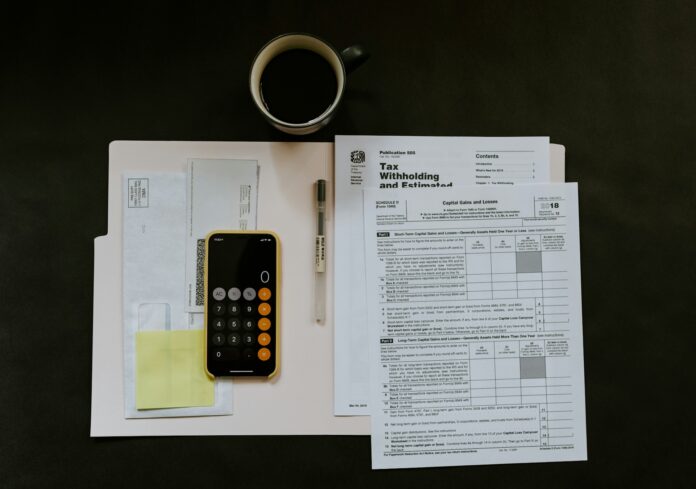Introduction
On the 20th of September 2023, over 10,000 registered candidates will sit the second edition of the FIFA Football Agent Exam since its reintroduction earlier in the year. As part of our courses on how to pass the exam and as further guidance for How to Become a Football Agent, we have decided to create several blogs which take the form of mock practice exams to help you prepare by testing your knowledge and answering some questions in the same style as the real thing.
Before attempting this mock exam we’d also recommend reading our top 10 tips for passing the FIFA Football Agent Exam and applying some of these key tips such as ensuring you read the questions properly and using the process of elimination if you don’t immediately know the answer. You should also have done a substantial amount of reading of the study materials, and other learning time, particularly spent understanding the most essential topics. You will notice that the hyperlinks on some of the questions in this mock exam will link you to other useful resources on the topics being asked about. If you get stuck, these should help!
Mock Exam
- In which of the following situations is there a presumption that scouting and consultancy services provided for a club will be included in the Football Agent Services and will be subject to a cap? select one or more
- a) The services were provided in the content of a transaction which did not materialise
- b) The services were stipulated in contracts which are not representation agreements
- c) It is not proven to FIFA that the services were effectively rendered
- d) The services occurred within 24 months of a transaction
- Which of the following natural and legal persons are considered to be third parties in transfers? Select one or more
- a) The agent of the engaging club
- b)Player being transferred
- c) Agent of releasing club
- d) Teammate of the player being transferred
- What event(s) might trigger training compensation? Select one or more
- a) Transfer of a player to a category IV Club
- b) None of the answers listed
- c) First registration as a professional
- d) Transfer of a professional player
- You are a football agent representing club ZFC that wishes to engage new players. ZFC is facing some financial hardship and asks for your advice in order to find a way to minimise the cost of the transfers. Which of the following options would breach the FIFA Regulations? select one or more
- a) ZFC only focuses on engaging amateur players. These players first sign their first pro contract with an amateur club (category IV) that is already cooperating with ZFC. The amateur club then transfers the players to ZFC so ZFC will save money from not paying training compensation
- b) ZFC engages the player on loan for free. By means of loan agreement, ZFC agrees it will engage the player after two years on a permanent basis for payment of a certain amount which may vary based on certain performance related bonuses. ZFC will therefore have enough time to obtain the money for the transfer fee.
- c) ZFC sells the economic rights of players to an investment fund in exchange for an amount that would help ZFC to pay the transfer fees for the said players
- d) ZFC reaches a transfer agreement with the players’ clubs, by means of which these clubs are entitled to a percentage of any future transfers of the said players
- Which of the following occurs after a football agent fails to comply with CPD requirements following the expiry of the provisional suspension period of 60 days? Select one or more
- a) Their clients have just cause to terminate all representation agreements with that agent
- b) All service fees must be returned to clients
- c) Their football agent licence is withdrawn
- d) The football agent is permanently suspended from the profession and may not apply for a new licence
- The Court of Arbitration for Sport has issued an award ordering a club to pay you money. However, the club has faced financial problems leading to its bankruptcy. The club subsequently disappeared and was disaffiliated from the relevant national association. A few years later, you discover an almost identical club has started competing in the same league as the defunct club. Since the defunct club has not paid its debt, may you initiate proceedings against the new club for failing to comply with the aforementioned award by claiming that it is the sporting successor of the defunct club?
- a) No, you need to file a new complaint against the new club with the competent body
- b) Yes, you may file such an application with CAS
- c) Yes, you may apply to submit the matter to the FIFA Disciplinary Committee
- d) Yes, you may file such an application with the FIFA Football Tribunal
- A coach talks to his best friend and shares with him that he has heard rumours at the club he has just joined about odd behaviour by a colleague involving young boys. Some people who have been at the club for a long time are saying that this has been going on for years, but the colleague is a very good coach and has a lot of influence. The coach also tells his friend he has noticed many boys working with him have changed over recent weeks and they seem to be afraid of him. He asks his friend for advice about what he should do because there is no safeguarding officer at the club. What should he do?
- a) Inform the club president who is the respective coach’s best friend
- b) Make a report to local child protection agencies
- c) Officially contact and enquire with management if there is an institutional reporting process in place
- d) Go to the police to report his concern about serious allegations of abuse
- A player’s former association has rejected an International Transfer Certificate request made by the player’s new association, indicating that the ‘contract between the former club and the professional player has not expired’. What can the new association do? Select one or more
- a) Enter a new transfer instruction
- b) Accept the ITC rejection
- c) Dispute the rejection and register the player
- d) Dispute the rejection and ask FIFA to intervene
- A president of a club comes to you for advice on match manipulation. He is concerned that some of the club’s players may be involved in match-fixing practices and wonders if the club may be held liable for their behaviour. Is this so?
- a) No, clubs may only be liable for behaviour of their own officials
- b) Yes, clubs may be held liable for the behaviour of their players, but are exonerated from liability if they can provide the absence of any fault or negligence on the part of the club
- c) Yes, clubs may be held liable for the behaviour of their own players under the principle of strict liability
- d) No, clubs may not be held liable for the behaviour of their players under any circumstances
- What information must be provided when a coach requests it from their football agent? Select one or more
- a) A copy of the representation agreement
- b) A list of all service fee payments in relation to them
- c) A legal opinion on the validity of their representation agreement
- d) A list of incurred expenses with receipts
- The FIFA judicial bodies base their decisions primarily on which laws and principles?
- a) Swiss Law
- b) CAS Law
- c) FIFA Statutes
- d) European Court of Justice
- How regularly will an ordinary FIFA Congress take place?
- a) Once a year
- b) Once every two years
- c) Every three years
- d) Every four years, coinciding with the world cup
- Which of the following does not form a part of the Dispute Resolution Chamber
- a) A chairperson
- b) Three deputy chairpersons
- c) 15 player representatives
- d) 15 club representatives
- Which of the following is not a specific objective of the FIFA Clearing House
- a) Protect the integrity of the football transfer system
- b) Enhance and promote financial transparency in the football transfer system
- c) Prevent fraudulent conduct in the football transfer system
- d) Make player salaries, transfer fees and agent commissions more visible to the public and football fans
- What is an Allocation Statement?
- a) A document sent by TMS to the FIFA Clearing House outlining which players have been allocated to which club
- b) A document sent by TMS to the FIFA Clearing House containing all the information required to collect the relevant amount and distribute payment to the training club
- c) A document sent by a member association to the FIFA Clearing House containing all relevant financial requirements of a transfer
- d) A document sent by a club to the FIFA Clearing House outlining the training compensation allocation due to them
- Who can admit, suspend or expel a FIFA member association?
- a) FIFA General Secretariat
- b) The FIFA Council
- c) The FIFA Congress
- d) The FIFA President
- Tom, a professional male player, was born 2004. He has played for Illinois FC, a category 2 club in the CONCACAF Confederation, since the calendar year of his 8th birthday. At the beginning of 2024, Tom will sign his first professional contract with Illinois’ parent club, Italia FC, a category 2 club in UEFA. What will the training compensation be that is due to Illinois FC?
- a) €280,000
- b) $280,000
- c) €400,000
- d) $400,000
- Which of the following is responsible for investigating compliance with the eligibility requirements of FIFA Football Agent Applicants?
- a) FIFA Football Agent Regulations
- b) The Football Tribunal
- c) The FIFA General Secretariat
- d) FIFA Council
- Which of the following is the best definition of an ‘academy’, according to FIFA:
- a) An organisation or independent legal entity whose primary objective is to provide players with academic education and football development.
- b) An organisation whose primary objective is to provide players with long-term training through the provision of the necessary training facilities and infrastructure.
- c) An organisation within professional football clubs to training young players and help them progress and develop into professional footballers
- d) A facility set up to develop young footballers through the provision of the necessary training facilities and infrastructure. This shall primarily include, but not be limited to, football training centres, football camps, football schools, etc.
- The Council may convene an Extraordinary Congress at any time and shall do so if what proportion of the member associations make such a request in writing?
- a) ⅓
- b) ½
- c) ⅕
- d) ¼
Answers
- C & D
- A,C,D
- C & D
- A & C
- A & C
- C
- B,C,D
- B & D
- C
- A,B,D
- C
- A
- B
- D
- B
- C
- A
- C
- B
- C
Summary
How did you get on?
This blog has hopefully provided you with some useful practice questions that demonstrate the style of questions and answers that FIFA will use in the exam and has perhaps highlighted key areas that you need to revisit and refine your knowledge of during your preparation for the FIFA Football Agent Exam. We would advise you to engage with as many practice questions as possible on these different documents and to ensure you have good navigation skills to be able to efficiently find each relevant section within the exam.
For more information on how to become a football agent and to pass the FIFA exam, keep an eye out for our courses and additional resources posted on our social media platforms under the Erkut Sogut Academy.











